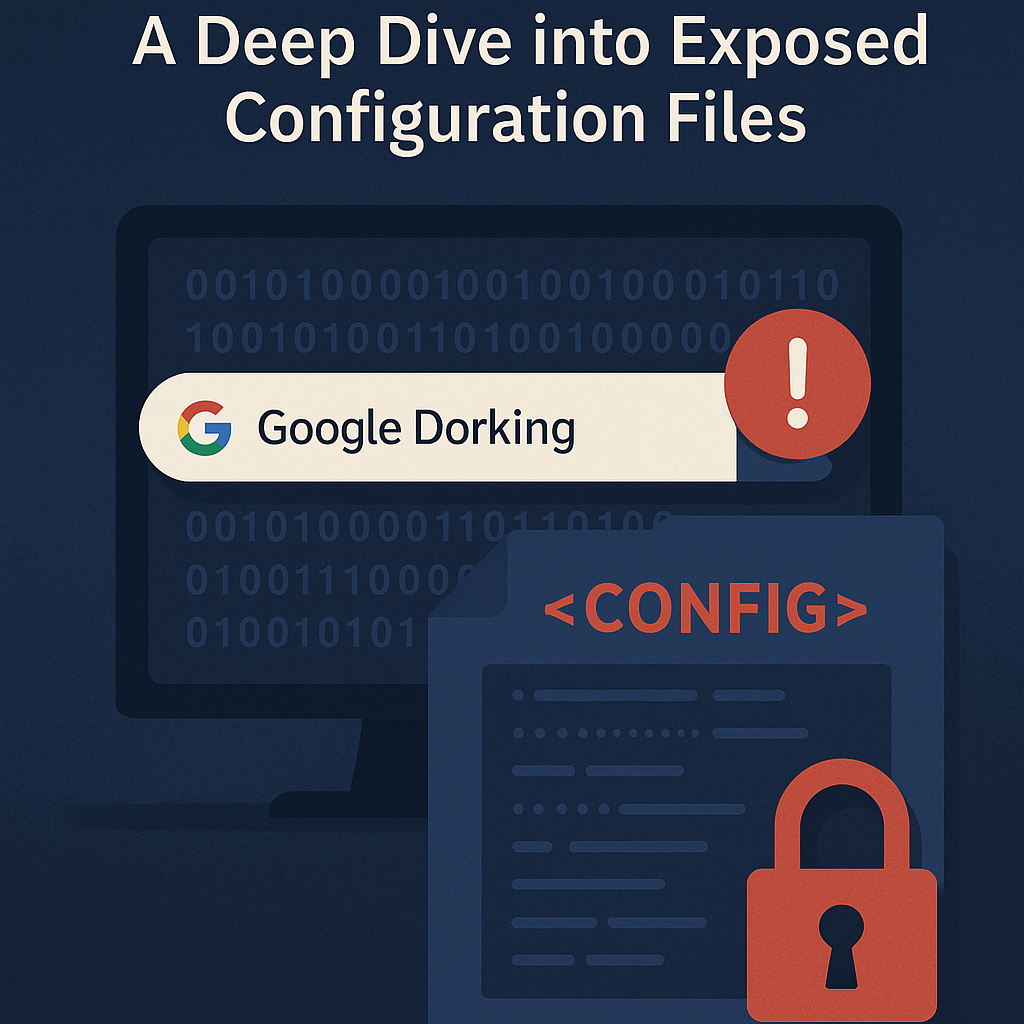Google Dorking for Cybersecurity: A Deep Dive into Exposed Configuration Files
Introduction
Google Dorking, also known as Google hacking, is a powerful technique that leverages advanced search operators to uncover hidden or sensitive information on the web. While originally designed for research and indexing, these searches can unintentionally expose misconfigured systems, leaking sensitive data to anyone who knows how to look.
Recently, while testing a newly created Google Dork, I stumbled upon a critical security vulnerability on a large company's website. This misconfiguration exposed sensitive configuration files containing database credentials and authentication keys—information that, if exploited by malicious actors, could have resulted in severe security breaches.
The Discovery
As part of my ongoing cybersecurity research, I developed a new Google Dork and requested its publication. While testing it, I discovered that specific configuration files were publicly accessible on a company's website. These files contained:
• Database credentials – allowing potential unauthorized access to the backend.
• Authentication keys – which could be leveraged to gain deeper access into systems.
• Other sensitive configuration data – potentially useful for attackers to further exploit vulnerabilities.
Understanding the risk, I immediately took the responsible disclosure route to notify the company and prevent any potential exploitation.
Responsible Disclosure & Resolution
Upon identifying the vulnerability, I contacted the company through their designated data privacy email. However, after noticing potential delays in response, I reached out to the CEO directly via LinkedIn, ensuring that the right people were made aware of the issue as quickly as possible.
Shortly after, I was contacted by the company’s cybersecurity team, who acknowledged the severity of the finding and assured me they would take immediate action. Within a day, the issue was fully resolved, demonstrating their commitment to security. They also provided me with a direct contact for any future findings, reinforcing the importance of collaboration in strengthening cybersecurity defenses.
Lessons from This Experience
This discovery highlights several key takeaways for both security researchers and organizations:
• Misconfigurations are a major security risk. Even well-established companies can unknowingly expose critical data due to minor oversights.
• Responsible disclosure benefits everyone. Reporting vulnerabilities ethically allows companies to fix issues before they are exploited by bad actors.
• Google Dorking is a double-edged sword. While it is an invaluable tool for cybersecurity professionals, it can also be misused by attackers. Organizations should proactively audit their online presence to ensure no sensitive information is unintentionally exposed.
• Quick response times matter. In this case, the company acted swiftly, minimizing potential risk. Other organizations should strive for similar responsiveness to vulnerability reports.
Conclusion
This experience underscores the importance of continuous security research and the ethical responsibility that comes with it. Google Dorking remains a valuable tool in cybersecurity, but organizations must be vigilant in securing their systems against unintended data exposure.
For security researchers, this case serves as a reminder that responsible disclosure is essential. A quick report and a collaborative approach can prevent major security incidents and ultimately contribute to a safer digital landscape.
#CyberSecurity #GoogleDorking #EthicalHacking #InfoSec #ResponsibleDisclosure #CyberThreats #DataSecurity #SecurityResearch #BugBounty #CyberAwareness







